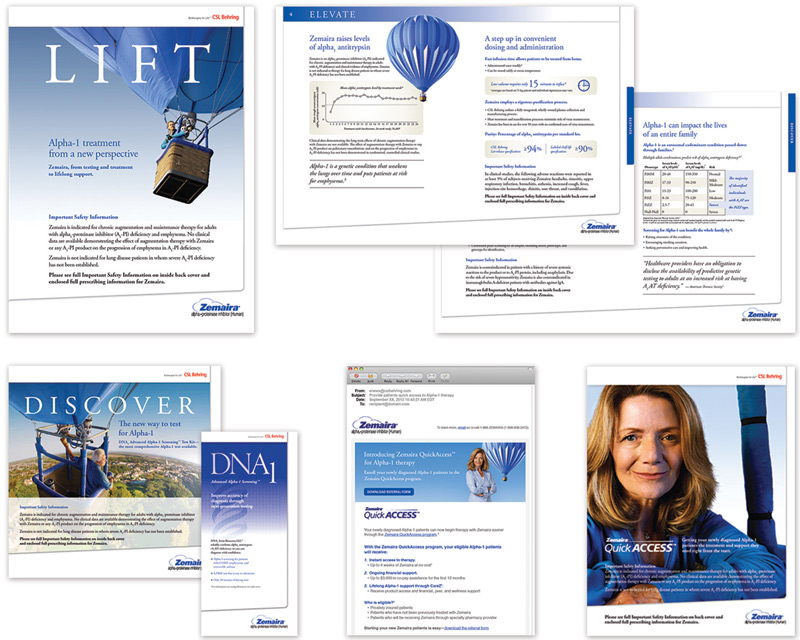Remember the show Dirty Jobs? The host worked alongside employees who were tasked with some of the most difficult, bizarre and messiest jobs you could possibly imagine. If you think I am bringing this up as a metaphor for the creative process, you’re wrong. This is the creative process.
Everything about the creative process is just plain messy. The rules are few and far between. It can be mind-numbing figuring out where to begin, let alone when you’re finished. And, just like any messy job, the creative process can be a real pain in the butt. Fortunately, we have a deadline to help move us along, which should be a blessing—but most of the time it becomes a curse. So, what keeps us from sinking further down in the muck and the mire?
A Clear, Concise Creative Brief
The creative brief is the road map for what you need to say and how you want to say it. Hopefully, your creative brief contains a morsel of insight or shines a light on the one thing you want your audience to believe or the problem you’re trying to solve. And once you finish writing your brief, then the real fun part begins.
Concepting, ideation, brainstorming—no matter what you call it, it’s a lot like playing pinball with your brain. You’re constantly moving back and forth from the key thought in the brief to various creative resources such as stock photography websites, creative advertising trade pubs (for inspiration only) and then back to the brief and then over to your art or copy partner for interpretation, inspiration or humiliation. Sound like fun? Now repeat it over, always with the problem you’re trying to solve in the back of your mind.
That’s what’s so fascinating about the creative process. There isn’t one. And that’s what makes it so frustrating. If there was a process, we would have software programs do what we do. Until that day comes (my apologies to account people everywhere), all we have is good old-fashioned brainpower and human experience.
The Creative Gauntlet
A concept that survives the ideation process usually takes the form of a metaphor because it’s such an effective way to disarm your audience. But it doesn’t have to. It can be an emotion, a fact, a piece of data. In true creative fashion, I’ll start at the end. I always have the following questions handy as we go. It’s a nice way to filter through your concepts in real time. My personal creative gauntlet is as follows:
- Is this concept unique? If it’s something I’ve seen before, was it in a different category or industry?
- The more original, the better. Is it entertaining enough to pique your interest or stop you for a second or two?
- Is it relevant to your audience? Does it solve a problem? Does it raise a compelling question only your brand can answer?
- Is there a human connection or emotion you can tap into?
- Is there an interesting physical attribute of the brand to promote? For instance speed, strength, convenience or MOA.
OK, time’s up. How many boxes did you check? The more checks, the greater likelihood you’re on to something. What? We’re not done? Of course not.
So, you may have a handful of concepts that survive the gauntlet, but then it’s time to put your concept to the ultimate test. Brace yourself for this one:
Does Your Concept Tell The Truth?
This one’s my favorite. Does your concept truly resonate or reward your audience for spending a little time with your brand? Did your audience gain value from what you had to share? Would it compel someone to share it with a co-worker or friend? Come on, honestly?
That last one is really tough, but it’s what you should always strive toward. The quicker and more simply you can share your big brand truth, the more appreciative your target audience (and your client) will be.
OK, ready to get your hands dirty? Good luck. Here’s a thought starter—the ultimate advertising truism. Written 40 years ago by ad legend William Bernbach, it still rings loud and clear today:
“The truth isn’t the truth until people believe you, and they can’t believe you if they don’t know what you’re saying, and they can’t know what you’re saying if they don’t listen to you, and they won’t listen to you if you’re not interesting, and you won’t be interesting unless you say things imaginatively, originally, freshly.”
Sidebar: The Process Behind the Zemaira Campaign
A good concept is also one that can be leveraged across different promotional pieces and mediums—even if alternate messaging is required. The ideal concept ties it all together.
Our concept for Zemaira was about changing the physician’s mind-set and perspective about the treatment of Alpha-1. That’s why we used the simple visual metaphor of a hot air balloon journey. The campaign showcased different aspects of the journey to highlight the core benefits of the brand.
For example, DISCOVER took the point of view from inside the hot air balloon to show the need for HCPs to broaden their view of who should be tested for Alpha-1 while simultaneously promoting the free testing options of Zemaira.
ELEVATE showed the hot air balloon in flight to represent the ability of Zemaira to raise the levels of Alpha-1 antitrypsin the body.
CARE showed a patient being supported in the hot air balloon to promote the ability of Zemaira to provide lifelong support to Alpha-1 patients through its Zemaira CareZ patient experience program.








